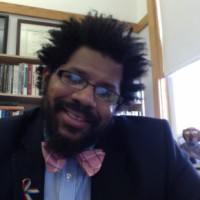Confederate monuments and American citizenship
In recent years, debates over the appropriateness of public monuments celebrating Confederate figures have become increasingly common. Along with exposing deep racial divides, these debates have brought to light historical attitudes and structures built on enduring notions of white supremacy.
While generally taking place in local contexts, they have ramifications that concern all Americans. They have the potential to provide new space for the dismantling of white supremacy. But such dismantling does not come easily.
The First Amendment empowers attitudes of hatred and disregard for the plight of others; it also gives power and voice to the weak and downtrodden. It allows for symbols of hate and social injustice like the Confederate flag, while also permitting oppressed and targeted groups to rise up in activism to eradicate societal ignorance and vice. Such mixed notions have defined the American spirit, from the colonial protests aimed at British occupation of ports to the birth of #blacklivesmatter.
In the aftermath of Michael Brown, Sandra Bland, Trayvon Martin, Eric Garner, and Freddie Gray, it’s clear that being black and American inherently conflicts with the ideals espoused by white America. W.E.B. Du Bois articulated this problem decades ago. In Black Reconstruction in America 1860-1880, Du Bois pointed to three common themes in white Americans’ beliefs about black Americans—themes that continue to shape the unrest around statues and symbols that celebrate slavery:
- All Negroes are ignorant
- All Negroes are lazy, dishonest, and extravagant
- Negroes are responsible for bad government during Reconstruction
These perceptions remained intact when Du Bois resigned from the NAACP in 1934, and they continue to characterize the language of white supremacy even now. They led to Du Bois growing more radical in his thinking. In 1953 he eulogized Josef Stalin. He valorized a socialist system that would hold a place for American Negroes, as opposed to one in which they were forced to riot against lynching, racism, police brutality, and symbols of a dark past. Such symbols persist today: the Confederate flag, monuments to Confederate fighters, parks dedicated to men who embraced white supremacy.
Du Bois famously articulated the identity of black people in terms of “two-ness—an American, a Negro; two souls, two thoughts, two unreconciled strivings.” Historically and even today, the two aspects of this dual identity have been construed in mutually exclusive terms through social structures determined by white supremacy.
But some of these structures are now being challenged in localities across the United States. In many places (such as the University of Texas), public monuments to Confederate notables have been removed. In Charlottesville, Virginia, home of the University of Virginia, a statue of Robert E. Lee has stood in Lee Park, adjacent to the city courthouse, since the 1920s. A 15-year-old high school student started a petition to have it removed, and the mayor has established a blue-ribbon commission to consider the issue.
Du Bois’s two-fold identity construction is pertinent to the questions raised by such controversies. Are black people Americans, or are they outsiders? Are black people represented in the community equally, or are they merely an extension of the community? When people of color ask that Confederate monuments be removed, are they voicing their concern as outsiders or as insiders? Decisions about whether to preserve or remove such monuments involve important questions of American identity and citizenship, as well as larger issues surrounding human personhood.
During the Revolution, statues of George III were taken down all over the country because Americans no longer identified themselves as his subjects. American citizens removed statues of their former king from public places then, without the disingenuous objection of “historical value” or “respect for veterans.” Why is it a problem now for American citizens to remove statues of people who no longer serve the community as archetypes of our common identity?
Du Bois observed how little had changed in America from his mid-20th-century perspective. Perhaps the conjunction of the #blacklivesmatter movement with challenges against Confederate monuments can help bring about some change in our own day.
Our weekly feature Then and Now harnesses the expertise of American religious historians who care about the cities of God and the cities of humans. It's published in partnership with the Kripke Center of Creighton University and edited by Edward Carson, Beth Shalom Hessel, and John D. Wilsey.






